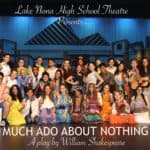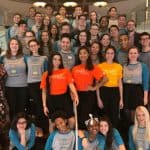Tavistock Development Company Still Needs to Approve the School

The International School of Science, Technology, and the Arts (ISSTA) has plans to open “the next step in education” with a preparatory school focused on integrating technology with traditional teaching methods for a STEM and Arts education.
If approved, the school would be located at the Lake Nona Medical City Center, a 650-acre health and life sciences park, and would offer on-campus residence for students. ISSTA is in the process of working with Tavistock on an agreement.
“As a veteran educator with close to thirty years of service I’ve seenthe good, bad, and ugly in education,” Dr. Jorge Diaz, the Founder and CEO of ISSTA, said.“I was sick of seeing howeducation was not living to its full potential by giving our studentsthe very best education could afford.”
Dr. Diaz is a former program director for the U.S Department of Education who “brings over 25 years of education experience including supervising, training, mentoring staff, and teaching,” according to the ISSTA.
ISSTA emphasizes that Generation Z, a term for those born from the mid-1990’s to the mid-2000’s, learn differently as a result of being the first generation to grow up with regular access to the internet and smart devices. They plan on designing their school using “state-of-the-art technology and teaching methodologies that will engage students and hold their interest,” according to a press release.
The rise of cell phones in American classrooms has long been an issue for educators. A 2018 studyfrom Common Sense Media found that 89% of American teenagers carried a smartphone. High schools across the country have had to decide on how to handle these new distractions.
The ISSTA hopes to set itself apart from other boarding schools and prep schools by using the technology students are already using.

“The vision for the school is to immerse our youth in an extended university style environment,” Diaz said. “Where students would fulfill fundamental academic objectives, but also begin their future in the present.”
The school has announced they will educate students with cutting edge technology such as virtual reality, smart glasses, and a campus-wide Wi-Fi connection.
The ISSTA would also be outfitted with a café, medical and pharmaceutical services, dormitories, and housekeeping, and many other features for the students’ residential lives. The school would also organize weekend excursions to Orlando’s theme parks and museums.
“The school will be grades 9-12 and we will start with 9th gradeand build each year until full capacity of 360 students,” said Diaz.
Students at ISSTA would be able to choose three different educations tracks: The Advanced Placement Diploma (AP), the Advanced International Certificate of Education (AICE), or the International Baccalaureate Program (IB).
AP allows students to take college-level courses in high school that may count towards university credit, depending on an end-of-year test and the university they choose. AICE is a curriculum track that seeks to balance studies of math, science, languages, and humanities. IB is an international program for students aged three to 19 that focuses on critical and independent thinking skills.
According to Diaz, the faculty at school would all have at least a Master’s degree and experience in a high school setting.
Although ISSTA would be a private school, it would open itself up to Orlando’s public education sectors.
“The realization of the ISSTA project is to build a high school with all the elements of an academically rigorous institution,” Diaz said. “Where a diverse student population will learn in a technologically advanced university-campus environment.”
Applications to the ISSTA are currently open; they require middle school transcripts, an essay response to three prompts, standardized test scores, and a recommendation letter. Students applying to the Science Academy must complete an interview and students applying for the Arts and Humanities Academy must audition.
Charles Ray, the Chair of the Board at ISSTA, has served as the U.S Ambassador to Cambodia, the U.S Ambassador to Zimbabwe, and a Deputy Assistant Secretary of Defense under the Bush and Obama administrations. He spoke glowingly about the ISSTA and its mission.

“ISSTA is the kind of school I wish had been available to me when I had to send my children away to school,” Ray said. “A curriculum that combines technology, science, and the arts, in an environment that fosters creativity and innovation, is essential to set students on the path, not just to future employment, but to make them better international citizens in an increasingly globalized world.”
If Tavistock approves the school, construction of the ISSTA is expected to begin later this year or in early 2020, according to Diaz, and first classes would begin on August 31, 2020.
For more information, visit: www.myissta.org
As of July 3, 2019, Tavistock’s Communications Manager, Karlee Kunkle, has confirmed, “No, no one from the smart high school group has connected with our team regarding the school.”
*Nonahood News will update here as more details come in on whether Tavistock Development Company is pitched the school and/or accepts the agreement or not.


